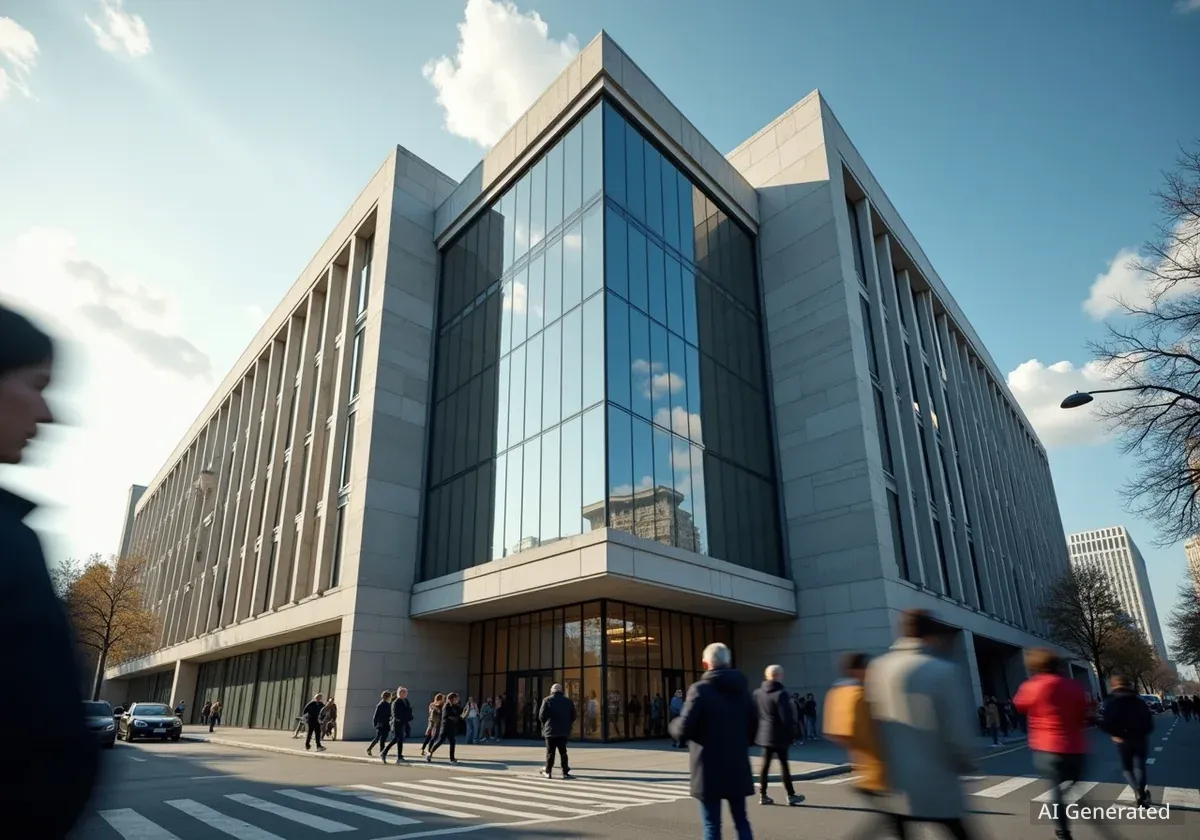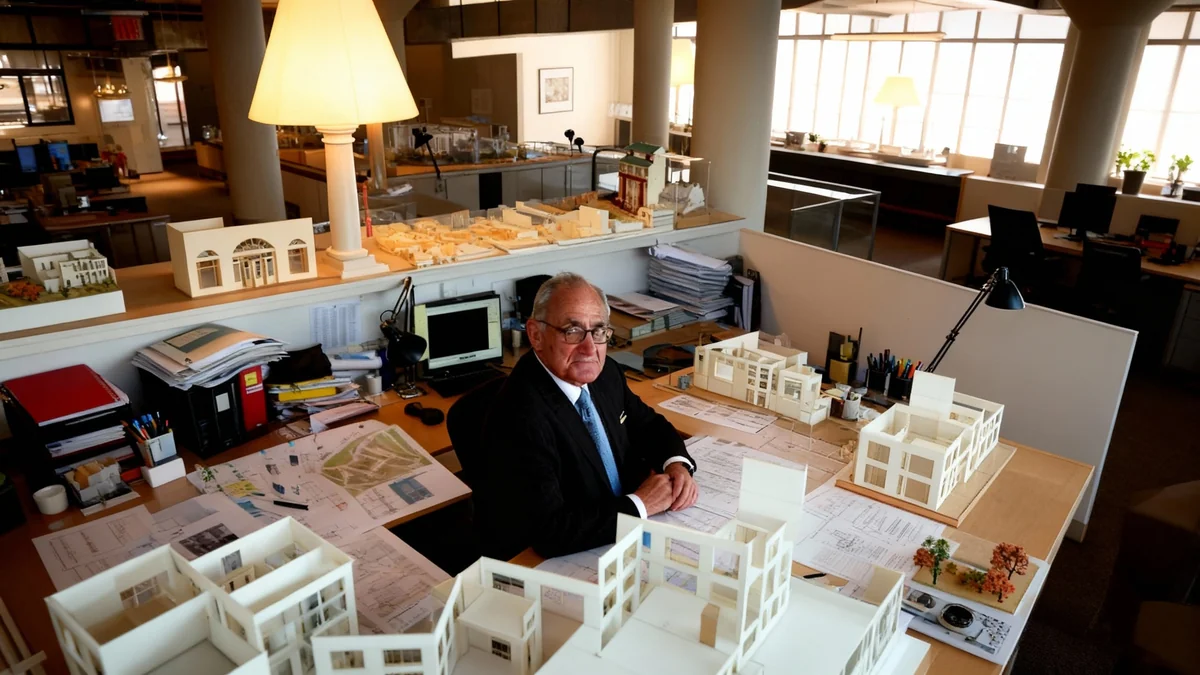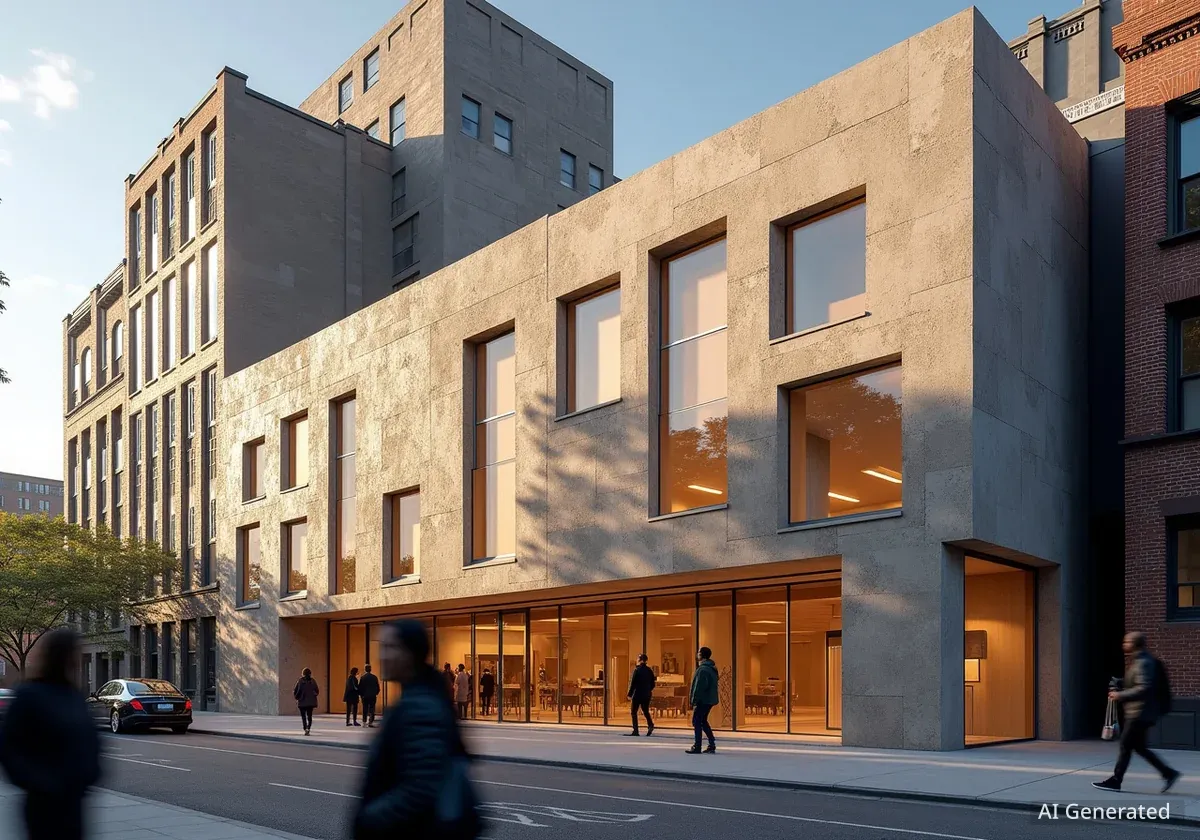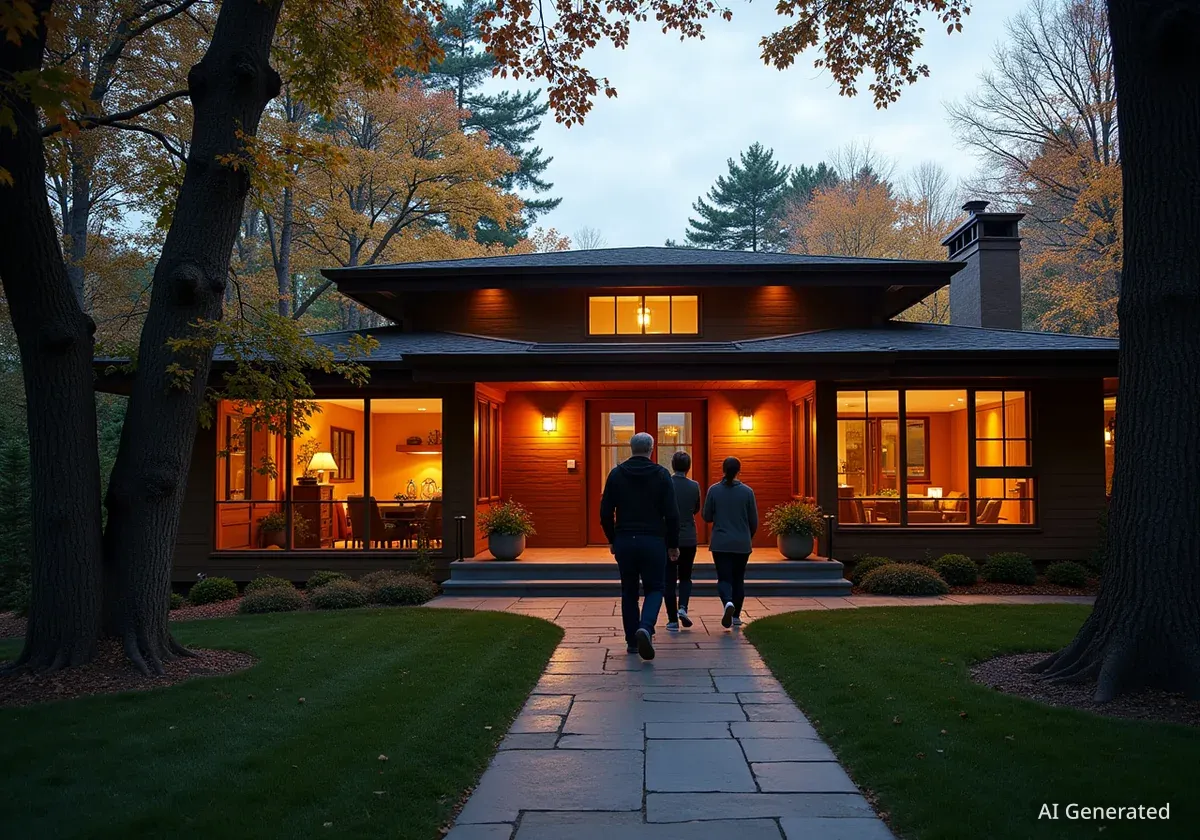Sir Terry Farrell, a leading figure in British architecture and urban planning, passed away at the age of 87. His firm, Farrells, announced his death, recognizing his lasting impact on urban development and design. Farrell was known for challenging traditional architectural ideas and promoting community-focused approaches. He championed the reuse of existing buildings instead of demolition, a principle that guided many of his projects.
Farrell's career spanned several decades, leaving behind a legacy of iconic buildings and influential urban masterplans. His work includes the distinctive MI6 Building in London and the Peak Tower in Hong Kong. He was a strong advocate for integrating history, place, and community involvement in architecture.
Key Takeaways
- Sir Terry Farrell, a prominent British architect, died at 87.
- He was a key figure in British Post-Modernism.
- Farrell designed the MI6 Building and the Peak Tower.
- He advocated for urban regeneration, not demolition.
- His work emphasized community participation and design literacy.
A Career Defined by Innovation and Context
Born in Sale, Cheshire, in 1938, Terry Farrell grew up in Newcastle upon Tyne. He studied architecture at Newcastle University, graduating in 1961. He then pursued a Master's degree in Urban Planning at the University of Pennsylvania in the United States. His time in the U.S. exposed him to modernist architecture, which influenced his early career.
Farrell began his professional life working for the London County Council. In 1965, he co-founded the Farrell/Grimshaw Partnership with Nicholas Grimshaw. Together, they created functional, modern buildings that were known for their clear structural design. This early collaboration laid the groundwork for Farrell's later independent work.
Architectural Facts
- Sir Terry Farrell was knighted in 2001 for his services to architecture.
- The MI6 Building (Vauxhall Cross) was completed in 1994.
- He received the Royal Town Planning Institute's Gold Medal in 2017.
Rise of Post-Modernism
In 1980, Farrell established his own firm, Terry Farrell & Partners, later known as Farrells. He quickly became a leading figure in the British Post-Modern movement. This style of architecture often combined traditional elements with modern designs, often incorporating humor and symbolism.
His notable Post-Modern projects include the TV-am Breakfast Television Centre, completed in 1983. This building became recognizable for its distinct appearance. Another significant work was Embankment Place, finished in 1990, which sits above Charing Cross railway station.
"My work these last 50 or so years has been heavily involved in creating a kinder, less doctrinaire world than that of the previous era of high modernism. It has been about layering, learning from the past, and regenerating with communities' involvement from the bottom up."
— Sir Terry Farrell
Perhaps his most internationally recognized project is Vauxhall Cross, completed in 1994. This building serves as the headquarters for the British Secret Intelligence Service, also known as MI6. Its imposing and fortress-like design has made it a cinematic icon.
Global Reach and Urban Philosophy
Farrell's practice expanded globally, undertaking large-scale projects around the world. These international endeavors demonstrated his ability to adapt his design principles to diverse cultural and environmental contexts. His firm delivered significant infrastructure and skyscraper projects.
Key international projects include the Beijing South Railway Station in China, a massive transportation hub, and KK100 in Shenzhen, also in China, which is a supertall skyscraper. These projects showcased his expertise in large-scale urban interventions and modern architectural demands.
Understanding Post-Modernism
Post-Modernism in architecture emerged in the late 20th century as a reaction against the perceived austerity and uniformity of Modernist architecture. It often incorporates diverse styles, historical references, and symbolic elements, aiming for more expressive and contextual designs. Architects like Terry Farrell sought to create buildings that were more engaging and responsive to their surroundings and the people who used them.
Advocacy for Urban Regeneration
Throughout his career, Farrell maintained a strong commitment to urbanism and the social aspects of design. He consistently promoted the idea of reusing existing structures and prioritizing regeneration over demolition. This approach aimed to preserve historical context while updating cities for modern needs.
He pioneered models for inner-city renewal that combined conservation efforts with mixed-use developments and vibrant public spaces. Projects like the Comyn Ching Triangle in Covent Garden, London, exemplify his urban design philosophy. This project successfully integrated new buildings with existing structures, creating a cohesive and lively area.
Farrell's masterplans for Newcastle Quayside also reflected his belief that cities evolve best through "layering" and direct community involvement. He believed that engaging residents in the design process leads to more successful and sustainable urban environments.
Social Impact and Design Literacy
Beyond his built works, Farrell was a vocal advocate for social mobility. His firm stated that he believed the class system in Britain limited opportunities for many, leading to a form of "democratic impoverishment." He sought to address these issues through thoughtful design and public engagement.
His ideas were formally presented in the Farrell Review of Architecture and the Built Environment in 2014. This review, commissioned by the UK government, called for significant reforms. It recommended greater design literacy among the public, policy changes, and the creation of "urban rooms" in every city. These urban rooms were envisioned as spaces where residents could engage with and understand their local built environment.
Farrell's Influence
- The Farrell Review (2014) proposed "urban rooms" for public engagement.
- He was appointed CBE in 1996 and knighted in 2001.
- The Farrell Centre at Newcastle University opened in 2023.
Recognitions and Legacy
Sir Terry Farrell received numerous honors for his contributions to architecture and urban planning. He was appointed Commander of the Order of the British Empire (CBE) in 1996 and knighted in 2001. In 2013, he was recognized at the London Planning Awards for his outstanding work in planning and development.
Further accolades included the Royal Town Planning Institute's Gold Medal in 2017 and an Honorary Freedom of Newcastle in 2016. These awards highlight the broad impact of his work and philosophy. In 2023, shortly before his retirement, he opened the Farrell Centre at Newcastle University. This public gallery and research space serves as an "urban room," directly inspired by his own recommendations for public engagement.
Through his distinctive buildings, insightful writings, and enduring influence on planning policy, Sir Terry Farrell leaves a significant legacy. His career was marked by a lifelong conviction that architecture and urbanism must develop through an ongoing dialogue with history, the unique character of a place, and the active participation of its community. His vision continues to shape discussions on urban development and design today.




